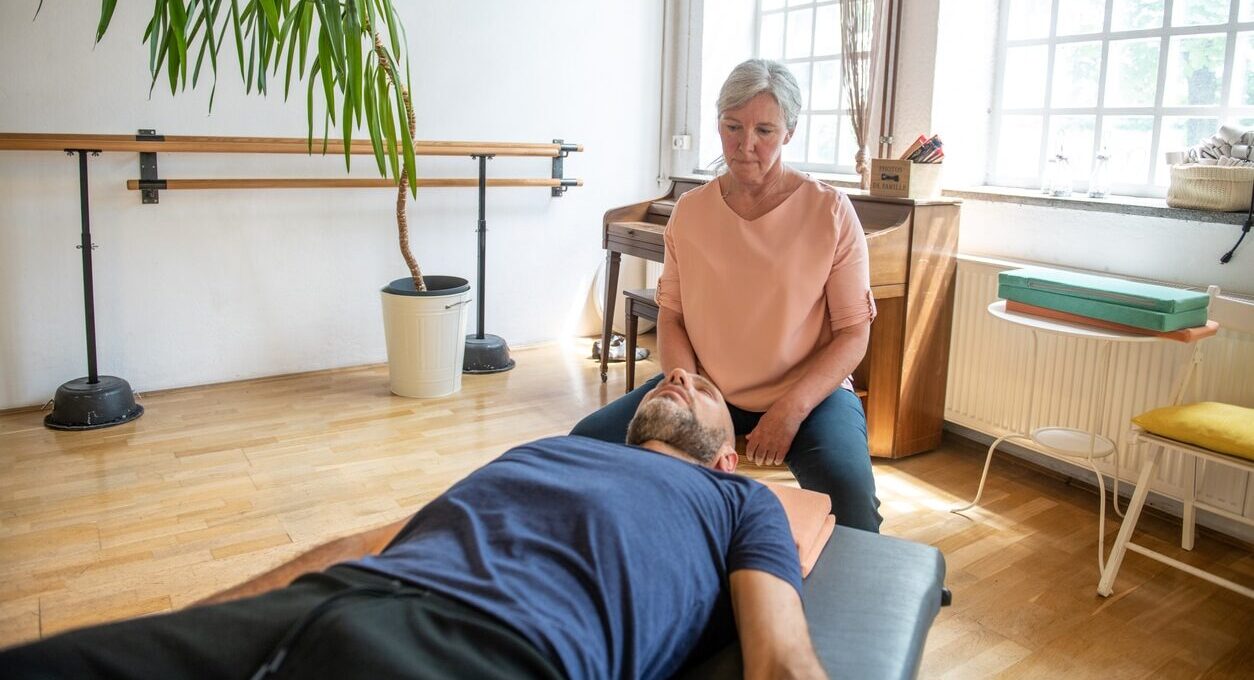Becoming more aware of various treatment modalities can be helpful. Especially if you’re a counsellor or looking to develop your helping skills. These include modalities like Somatic Experiencing and Polyvagal Theory.
Trauma is a complex phenomenon. Treating and resolving trauma can also be challenging without the appropriate skills and knowledge. However, as more evidence-based research becomes available, we can develop more holistic and supportive treatment approaches.
In this post, we’ll explore both Somatic Experiencing and Polyvagal Theory and how these apply to counselling and managing trauma.
Somatic Experiencing
Dr. Peter Levine developed Somatic Experiencing, which is a therapeutic modality. “Somatic” relates to the body, which means involving the body in the therapeutic process and not only the mind. In Levine’s first book, Waking the Tiger, he explains how he was inspired to develop this approach by looking at how animals react after predators threaten them.
After escaping a predator, animals “shake” their bodies to eliminate stress and fear. However, humans don’t do this. So, according to Levine, this flight or fight energy is “trapped” within the body. When we don’t integrate these experiences, our nervous systems can become dysregulated and constantly feel “triggered”, even when there is no actual threat.
Being “triggered” involves experiencing the physical sensations of being threatened. Levine’s theory is that we can learn to regulate our nervous systems by becoming aware of what is happening in our bodies when we are under stress.
However, while animal behaviour and “shaking” might seem like a straightforward response, human experience and trauma are complex. For this reason, Levine’s Somatic Experiencing approach focuses on safely processing trauma so it doesn’t feel overwhelming or put our nervous system under intense stress.
Overall, working with a qualified practitioner who you can work with on a long-term basis is recommended to help process trauma.
Somatic Experiencing in practice
One of the most critical concepts in Somatic Experiencing is titration. In Chemistry, titration is a chemical process where a known volume of one solution is added to a known volume of another solution very slowly to neutralise both agents or achieve a desired chemical reaction.
Using a similar principle, in Somatic Experiencing titration involves feeling physical sensations in manageable increments until we neutralise the fight or flight energy stored in the body. To better understand how physical sensations can guide us to manage stress and process trauma, we’ll now discuss Polyvagal Theory.
Polyvagal Theory
Stephen Porges, a neuroscientist, developed the Polyvagal Theory. This theory involves how the human nervous system responds to stress and traumatic events. It states that we can learn to regulate emotionally by stimulating our vagus nerve, which manages how we shift between different nervous system states.
What is the vagus nerve?
The vagus nerve runs from either side of our brain through our spinal cord and links to the large intestine. It’s known as the “wandering nerve”, as it connects with many different body parts. Importantly, this nerve is responsible for the interplay between our sympathetic and parasympathetic nervous systems.
According to Polyvagal Theory, there are three nervous system states, i.e. safe, mobilised and immobilised. When we struggle to regulate emotionally, we can get stuck in either a mobilised (sympathetic) or immobilised (parasympathetic) state. However, if we learn to work with our vagus nerve, we can develop resilience, allowing our nervous system to switch between the two states as required.
How can we apply Polyvagal Theory to trauma?
Through Polyvagal Theory, we can learn ways to manage our emotional responses or triggers. We can do this by developing vagal tone (developing resilience) and practising specific exercises to help bring the nervous system back into balance.
In addition to counselling and spending time with supportive people, other ways to emotionally regulate include dancing, yoga, time in nature, and breathing exercises.
Treating trauma in practice
Both theories discussed above give us insight into how trauma manifests physically and highlight some tools we can use to regulate our nervous system.
However, dealing with trauma requires an integrated approach. This knowledge can benefit practitioners and clients, but any therapeutic intervention needs to be professional to avoid worsening trauma’s effects.
If you’re interested in learning skills to treat and manage trauma, look at our list of short online courses in counselling, crisis and trauma. These courses will equip you with the tools to build effective helping relationships and support those in need:
Intro to Crisis and Trauma
Learn how to respond optimally in crisis and/or trauma situations and how to develop your own trauma-informed approach.
Symptoms of Crisis & Trauma
Understand the difference between immediate and long-term effects of crisis and trauma and accompanying emptional and physical reactions.
Counselling Children and Youth
Learn how to effectively engage with children and young people in crises. It may involve family break up, grief, trauma and bullying.
Fundamental Counselling Skills
Gain practical skills for helping conversations and develop your capacity as a reflective practitioner.
We also offer further micro-credentials and short courses in related subjects; browse our course list to learn more.
